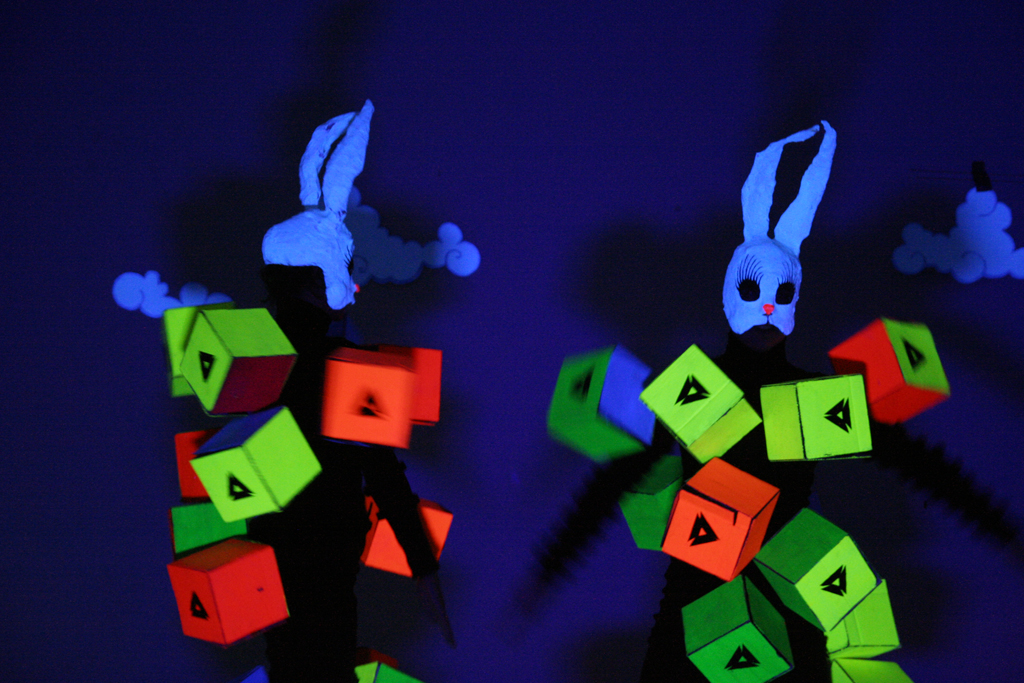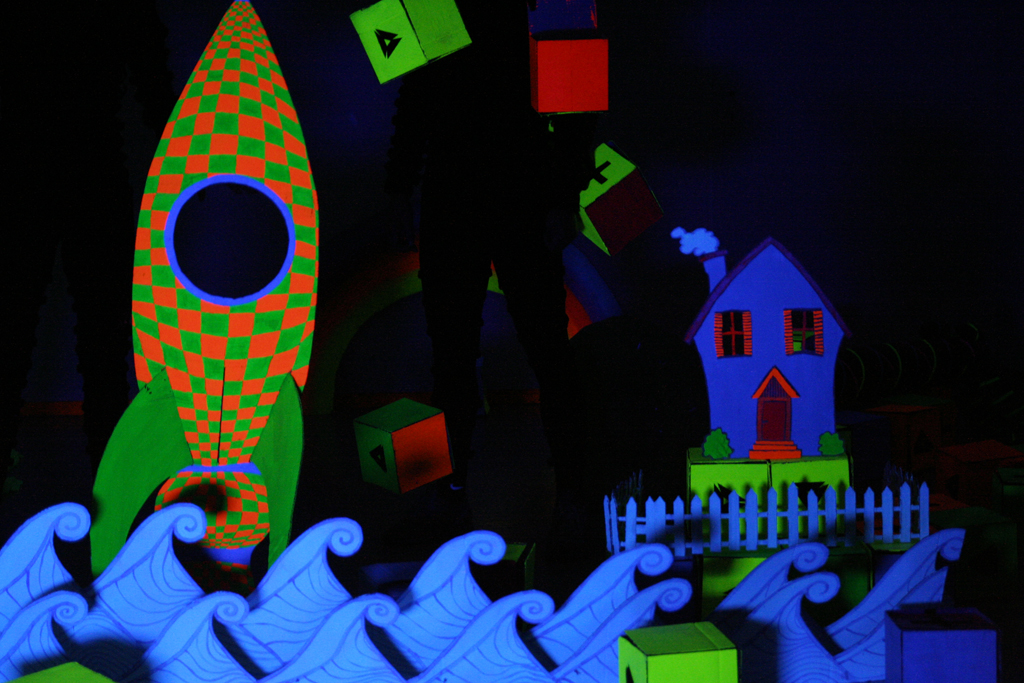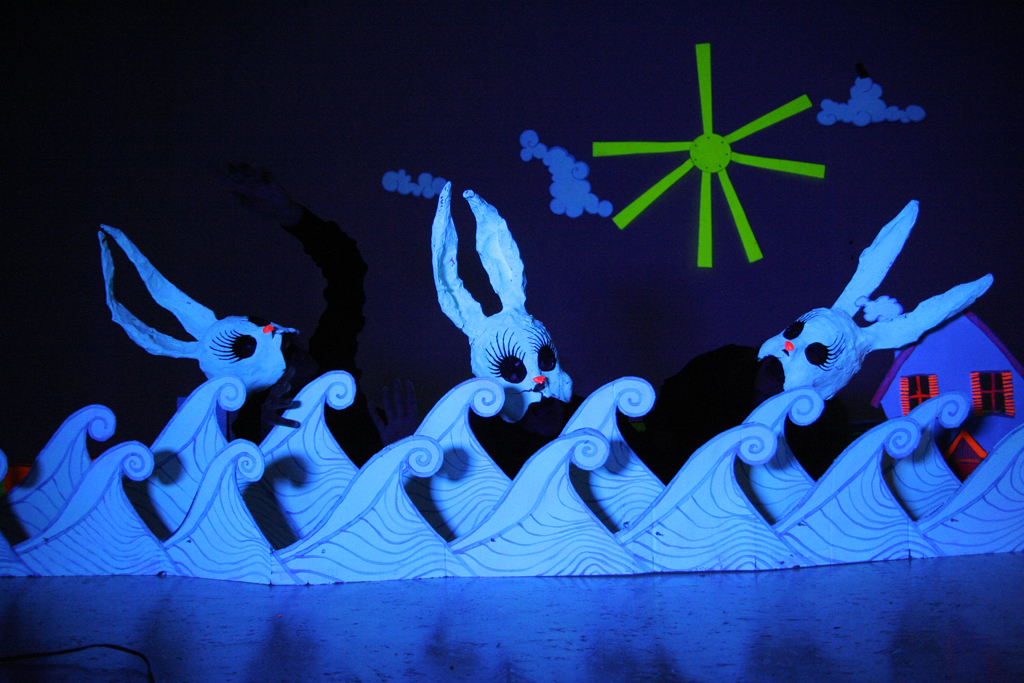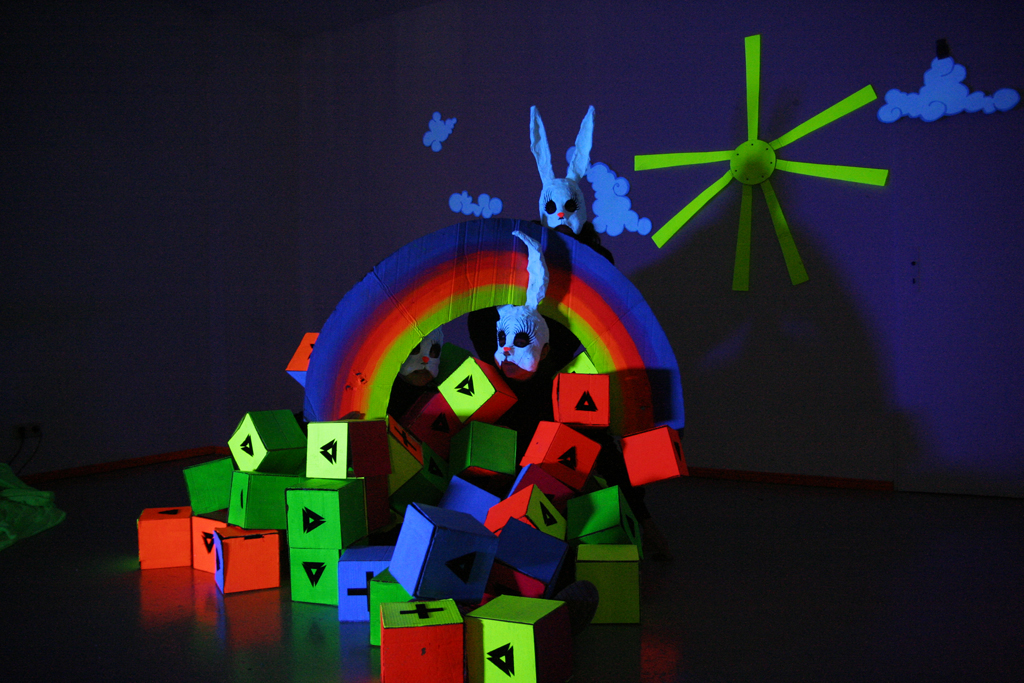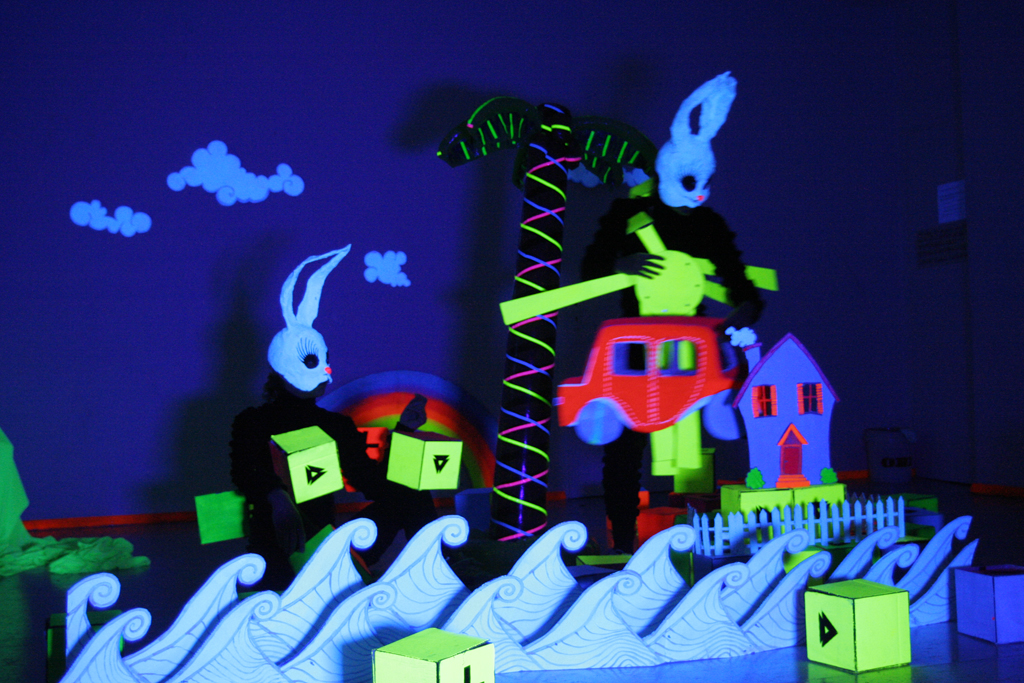CHEZDEBS
Performative concert, premiered at the festival “The Stage that wasn´t there”, Copenhagen, 2010
CHEZ DEBS is an interdisciplinary art project developed by musician 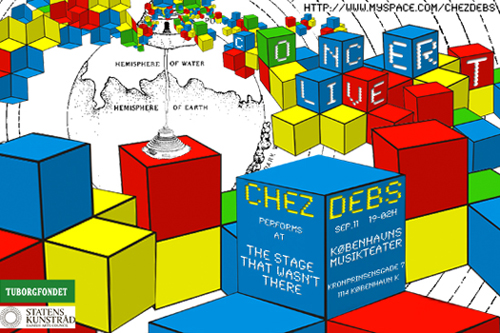 Deborah Vlaymans, choreograph Karen Lambæk and visual artist Annesofie Norn.
Deborah Vlaymans, choreograph Karen Lambæk and visual artist Annesofie Norn.
The project combines electronic music with physical and visual elements in a performative format. By pushing the boundaries between different art forms, we look for new constellations that emerge at the borderline. Through a poetic visual language we present a cacophonic mix of electronic music, analogue sounds, object theatre, dance and an ambiguous manga-like universe.
With Vlaeymans musical universe as a common base, we have performed several ‘open rehearsals’ at both big and small dance clubs, parties and art venues.
On the basis of these experiences we decided fundraise for a research project to explore our common work in more depth.
Specification and background
 Abundance, sweets, tarrantella and grotesque humour is taking the audience on an apocalyptic journey into a stylised collage of iconoclastic metaphors, a luminous world with two-dimensional characters simulating a distorted dream about the perfect life. The narrative elements are easily recognized, but complexly interlaced.
Abundance, sweets, tarrantella and grotesque humour is taking the audience on an apocalyptic journey into a stylised collage of iconoclastic metaphors, a luminous world with two-dimensional characters simulating a distorted dream about the perfect life. The narrative elements are easily recognized, but complexly interlaced.
To counterpoise the young and modern dream of paradise we have chosen to let Dantes’numeric symbolic of his “The Divine Comedy” function as our structural model. Since the book reflects the divine origin of the universe, we choose to look at it as an important guideline for our search after the Paradise Lost. In the poem, Paradise is depicted as a series of concentric spheres surrounding the earth. In the light of Dantes universe we worked with two central phrases as point of reference. “Metamorphosis” and “transformation” which were reflected and elaborated through music, movement and space.
The Chez Debs club performance will examine these questions and enact the consequences of our present-days relentless search for self-realisation and ultimate happiness.
Space
We wanted to create a mobile exhibition and concert space. All objects was be created out of temporary and light materials, adjustable to the different circumstances of the club stages, which often have a small stage-areal and a big dance floor. The scenographic premise was entirely based on manual handling of plenty objects, such as rope pulls, and analogue solutions for displaying video. We worked with simple materials as carton, strings, plaster, discarded objects and artefacts.
Metamorphosis and transformation was the two central ideas in our conceptual frame, being presented on the stage, through masks and body related artefacts (for example representing mythical creatures, animals and organic elements).
Music
Electronic music with a heavy beat and a danceable rhythm is the fundament in our performance. The underlying beat functions as a constant. Analogue and digital sounds was be produced and placed upon a backing-track, using voice, midi-equipment, constructed and acoustic instruments. We was manipulating the music and
modulating the sound image at specific moments throughout the performance. The music follows an almost classical dramaturgical curve, following the phases of the preliminary notes, point-of-no-return, climax into fade-out and recapitulation.
Choreography
Together with Dante we are on a journey to find paradise. On our journey we will continuously transform between different mythological figures, virtuous  personas from the classical antiquity and bewildered personas from our own contemporary society. The role of Dante as the narrator as well as the author provides a physical dogma enacted through a score of stage actions and musical tasks. The score will demand a flexible body and mind to cope with the simultaneous multiple actions and operations. Failure to carry out all tasks is not a goal in itself, but nevertheless unavoidable.
personas from the classical antiquity and bewildered personas from our own contemporary society. The role of Dante as the narrator as well as the author provides a physical dogma enacted through a score of stage actions and musical tasks. The score will demand a flexible body and mind to cope with the simultaneous multiple actions and operations. Failure to carry out all tasks is not a goal in itself, but nevertheless unavoidable.
This results in compositional chaos, although structure is recognised through the way the performers rhythmically and spatially relate, fragments of stylised dance phrases, tableau effects and by creating opposed or similar movement qualities.
After the concert most people will probably wonder what exactly they have just been witnessing… a concert, a performance, a game, an art-installation, a comedy, a tragedy, or something completely different?

